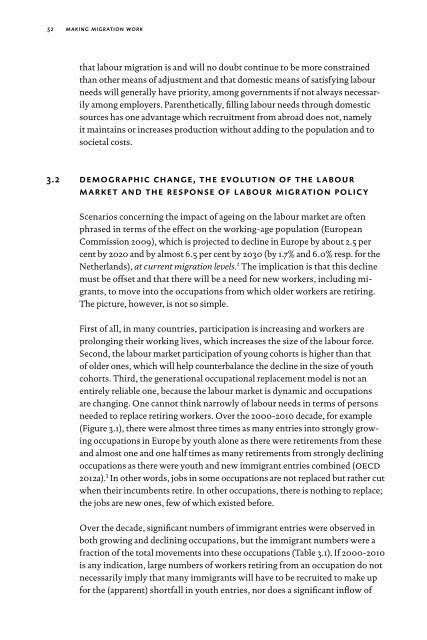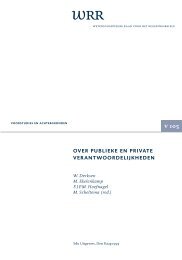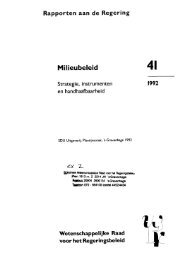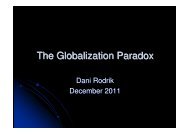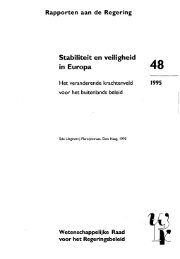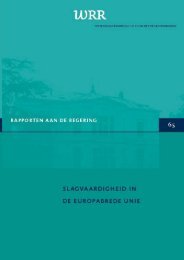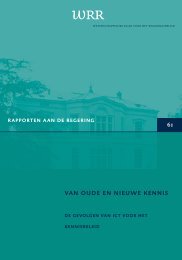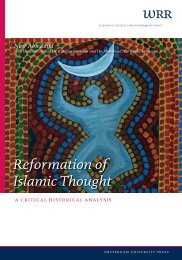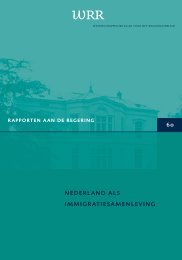Making Migration Work - Wetenschappelijke Raad voor het ...
Making Migration Work - Wetenschappelijke Raad voor het ...
Making Migration Work - Wetenschappelijke Raad voor het ...
- No tags were found...
Create successful ePaper yourself
Turn your PDF publications into a flip-book with our unique Google optimized e-Paper software.
52making migration workthat labour migration is and will no doubt continue to be more constrainedthan other means of adjustment and that domestic means of satisfying labourneeds will generally have priority, among governments if not always necessarilyamong employers. Parent<strong>het</strong>ically, filling labour needs through domesticsources has one advantage which recruitment from abroad does not, namelyit maintains or increases production without adding to the population and tosocietal costs.3.2 demographic change, the evolution of the labourmarket and the response of labour migration policyScenarios concerning the impact of ageing on the labour market are oftenphrased in terms of the effect on the working-age population (EuropeanCommission 2009), which is projected to decline in Europe by about 2.5 percent by 2020 and by almost 6.5 per cent by 2030 (by 1.7% and 6.0% resp. for theNetherlands), at current migration levels. 2 The implication is that this declinemust be offset and that there will be a need for new workers, including migrants,to move into the occupations from which older workers are retiring.The picture, however, is not so simple.First of all, in many countries, participation is increasing and workers arepro longing their working lives, which increases the size of the labour force.Second, the labour market participation of young cohorts is higher than thatof older ones, which will help counterbalance the decline in the size of youthcohorts. Third, the generational occupational replacement model is not anentirely reliable one, because the labour market is dynamic and occupationsare changing. One cannot think narrowly of labour needs in terms of personsneeded to replace retiring workers. Over the 2000-2010 decade, for example(Figure 3.1), there were almost three times as many entries into strongly growingoccupations in Europe by youth alone as there were retirements from theseand almost one and one half times as many retirements from strongly decliningoccupations as there were youth and new immigrant entries combined (oecd2012a). 3 In other words, jobs in some occupations are not replaced but rather cutwhen their incumbents retire. In other occupations, there is nothing to replace;the jobs are new ones, few of which existed before.Over the decade, significant numbers of immigrant entries were observed inboth growing and declining occupations, but the immigrant numbers were afraction of the total movements into these occupations (Table 3.1). If 2000-2010is any indication, large numbers of workers retiring from an occupation do notnecessarily imply that many immigrants will have to be recruited to make upfor the (apparent) shortfall in youth entries, nor does a significant inflow of


